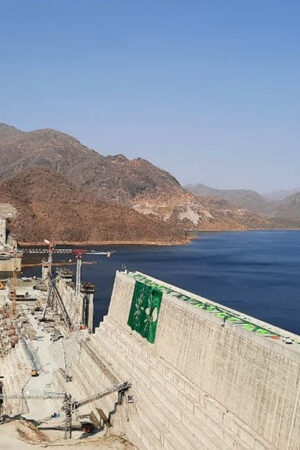Amidst the current challenges of the global economy, the mining sector has a sense of optimism. Demand has been supportive of gold and iron ore prices, and minerals used for batteries will remain in focus, not least due to the ongoing growth in the electric vehicle markets. Long term fundamentals underpin future demand.
Alongside a favourable outlook for mining demand, the cost side of the sector is being impacted by the application of technology – enhancing margins and reimagining processes which in some cases have endured for decades.
Autonomous mining
Autonomous vehicles were once the domain of sci-fi. However, the mining industry is embracing this change.
As an example, Resolute Mining (ASX:RSG) has developed the world’s first autonomous mine site at its Syama Gold Mine in Mali. The drilling, loading, dumping, haulage and truck navigation within the mine are all autonomous, being controlled from a central monitoring and visualisation system.
The change has driven a proposed 20% productivity gain – with significant uplift in production during what were previously workers’ shift change periods. While the cost associated with the initial shift to automation was US$10-$15million, mining costs have decreased by approximately 30% while increasing safety.
In addition, iron-ore miners have not missed a step in introducing autonomous vehicles, with Rio Tinto, BHP and FMG all introducing further autonomy into their fleet. FMG has stated its fleet of autonomous trucks safely travelled over 28 million kilometres and moved 860 million tonnes of material whilst delivering a 30 per cent improvement in productivity.
Electric Vehicles
Electric vehicles on mine sites are likely to become a regular feature, given their cost and environmental benefits. The Elektro Dumper, made by Kuhn Schweitz, recently became the world’s largest electric vehicle, operating out of a quarry in Biel, Switzerland. The unique property of the vehicle is that it is never has to be recharged – with the vehicles regenerative braking system recapturing more energy on the descent than is used on the ascent, creating a surplus of 200kwh per day. A truck of this size would usually consume 80,000 – 100,000 litres of diesel annually, equating to US$60,000 to US$120,000 in reduced fuel costs per annum – not to mention the reduction in CO2 emissions. Expect to see this area rapidly expand as costs on EV based haulage vehicles fall in line with growing uptake.
Data Decision Making
Data driven decision making has come to the forefront of technology adoption within both explorers and producers. Geological modelling has been rapidly improved by an increase in data processing efficiency, allowing for improved insight into ore bodies, helping to better target drilling, blasting and mine planning.
DownUnder GeoSolutions (DUG) (a client of Moore Stephens in Perth, Western Australia) is an example of a company that hasdeployed this strategy. DUG has constructed one of the world’s largest supercomputers to cost effectively process large scale-use of emerging seismic codes, such as Full Waveform Inversion, whilst also supporting established application codes. As part of DUG’s offering, they have developed patented technology which greatly reduces energy usage and cost and increases the life and efficiency of the hardware. DUG now boasts some of the greenest computer centres in the world.
Producers are also reaping the benefit of this increase in data driven analytics. Live yield optimisation data and sensor-based sorting increases production efficiencies in real time. Investment in this area has been rapid as producers recognise the instant value this data can yield.
As an advisor to mining clients, Moore understands it has an absolute need to stay abreast of developments so it is able to understand the environment our clients operate in. We are here to help clients to take advantage of the many opportunities technological change is offering the industry.















